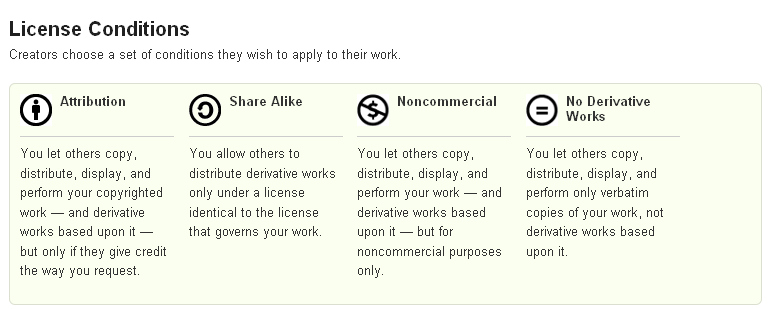I decided to conclude our unit on Internet Safety with a discussion on copyright, creative commons, and fair use. I have come to the conclusion that the subject is not as “cut and dry” as I supposed. This post and chart suggest copyright laws are stringent, and anyone breaking copyright law is treading in dangerous water. In contrast, this video seems to suggest almost anything falls under the fair use concept if it is for educational purposes. Read what Doug Johnson, author of Blue Skunk blog believes. What is a teacher to do?
Students will understand the concept of copyright, fair use as it applies to education, and creative commons licensing. After watching the video below, students will go to Brain Pop Digital Citizens on the left under the Link Category: Online Safety. Students will review the Internet Safety rules and concepts by watching the videos and completing the activities in Brain Pop.
Below is a transcription of the essential elements in A Fair(y) Use Tale displayed above:
What is copyright? Copyright is a permanently fixed original work in some form that can be seen or heard. Only the copyright owner has the right to use their work. It’s forbidden to use a copyright work without permission granted by the copyright owner, and anybody who is foolish enough to threaten our copyright has broken the law.
What things can be copyrighted? There is the usual things like books, plays, music, dance, movies and pictures. You can’t copyright an idea. We can only copyright the form an idea takes.
Copyright Duration and the Public Domain: The law says copyright only lasts for a fixed amount of time. For example, copyright use to last just fourteen years. The culture thought that was long enough for a copyright owner to make money from their work. After just fourteen years that work fell into the public domain so anyone could use the work. What is the public domain? A work in the public domain is free for anyone to use. Copyright now lasts a lifetime plus seventy years, and for a company, copyright lasts over one hundred years.
What is fair use? Copyright may be broken, but it’s slippery. You can borrow a small amount of a copyright work to teach, for news reporting, to parody, or for critical comment. There are certain rules that demonstrate fair use. First of all, it’s the nature of the work borrowed. Second of all, it’s the amount you borrowed. And, it has to be something that doesn’t change the original work’s value in the market place. Fair use is not a right. Fair use is only a legal defensible position.
A Fair(y) Use Tail does not explain Creative Commons. Creative Commons is a non-profit organization that provides tools that give individuals and organizations a standardized way to grant copyright permissions to their creative works. Listed below are the license conditions. Click on the graphic to go to licenses page of the Creative Commons website.
